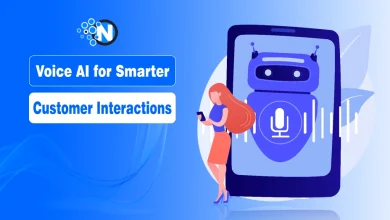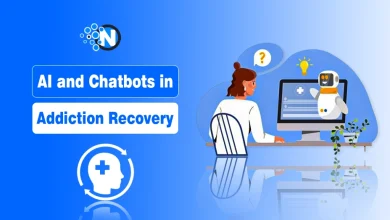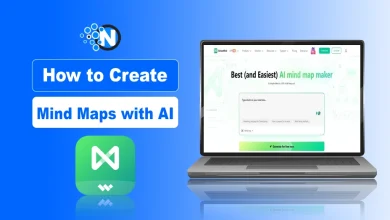The Evolution of AI Voice Assistants: From Basic Commands to Complex Conversations

From simple command recognition to highly articulated conversational interfaces, the evolution of AI voice technology has been one of the most significant technological advances in the digital world.
What was initially realized as basic speech-to-text functionality has transformed over time into intelligent systems that understand context, learn from interactions, and communicate with natural and human characters.
In this blog post, I will walk you through the evolution of AI voice assistants and how they can help in different walks of life.
Keep reading!
Early Beginnings of AI Assistants
The earliest batch of AI voice assistants promised usefulness mostly in executing basic commands. However, these could perform such simple tasks as waking people up for an event, making a call, or playing a song.
A pre-defined phrase structure was required, with little natural language variation or contextual understanding.
According to the source, 40% of people use the voice search function at least once daily in their day-to-day tasks. It shows the popularity and usefulness of these assistants in everyday life.

The Evolution of Natural Language Processing
One of the significant breakthroughs in this field has been the advancement of natural language processing (NLP) technologies. These have enabled AI voice systems to understand such utterances much more like humans produce and interpret them with their specific colloquialisms as different accents.
By integrating machine learning algorithms, these assistants learned from interactions and showed a high response accuracy toward future interactions.
Understanding Context and Intent
Modern AI voice technology has made remarkable progress in understanding context and user intent. The modern systems can:
- Maintain context across multiple exchanges in a conversation
- Understand implicit references and pronouns
- Recognize emotional undertones in speech
- Process complex queries requiring multiple steps
- Learn from past interactions to provide personalized responses
Beyond Simple Commands
The evolution of AI voice assistants has transformed them from simple command executors to intelligent conversation partners. These systems now support:
- Multimodal Interactions: Combining voice with visual and touch interfaces for more intuitive interactions
- Contextual Awareness: Understanding time, location, and user preferences to provide more relevant responses
- Proactive Assistance: Anticipating user needs based on patterns and historical data
- Complex Task Execution: Managing multiple steps and dependencies in task completion
Impact on Daily Life
The advancement of AI voice technology has significantly influenced how we interact with our devices and manage daily tasks:
- Home Automation: Voice-controlled smart home systems have become increasingly sophisticated, managing everything from lighting to security
- Productivity Enhancement: AI voice assistants help with scheduling, reminders, and task management
- Information Access: Quick and hands-free access to information, weather updates, and news round the clock
- Entertainment Control: Seamless management of music, videos, and other media through voice commands
Business Applications
The evolution of AI voice technology has created new opportunities in the business sector:
- Customer Service: Advanced chatbots and voice assistants handling customer inquiries
- Meeting Management: Voice-controlled conference systems and meeting transcription
- Workflow Automation: Voice-activated processes and system controls for automation of workflows
- Data Analysis: Voice-commanded reporting and data visualization to make decision making easier and more effective
Technical Advancements
Several key technical improvements have driven the evolution of AI voice assistants, some of them are:
- Enhanced Speech Recognition: Better accuracy in understanding different accents and speech patterns to deliver better outcomes
- Improved Processing Speed: Faster response times and real-time processing capabilities
- Advanced AI Algorithms: More sophisticated understanding of language and context
- Better Noise Handling: Improved ability to filter out background noise and focus on user voice
Challenges and Future Developments
Despite the progress of AI voice technology, counterbalancing many challenges at the present:
- Privacy Concerns: Publicly using a service while allowing users privacy and taking care of their data may cause a conflict
- Accuracy Issues: Improvement in understanding different speech patterns and accent
- Complex Queries: Dealing with increasingly convoluted requests from users and multi-tier processes
When Can You Look Forward with AI Voice Technology?
It makes the way for the exciting future of AI voice technology:
- Emotional Intelligence: Understanding and responding better to human emotions
- Multilingual: Translation from and into any language and communication through borders
- Personalization Searching for ever more intricate ways by which a user learns preferences and patterns
- Integration: Improved connectivity among the devices and platforms
Conclusion
Progressively, voice assistants continue to evolve with the exception that it did not stop with the implementation of the basics of talking to a machine. Which was recognizing simple commands, to involved in smart conversations, and indeed heading toward finding shortcuts to going through complex processes and eventually executing its commands. Everything within which these systems touch our lives continues to grow, as well as the daily lives in which we live.
Ongoing future promises advancement, even more significant innovations in applications, and even more advanced capabilities in air interface applications, and what is more, a far-reaching change concerning the popular understanding of human and machine interaction from that which we are currently envisaging possible.




